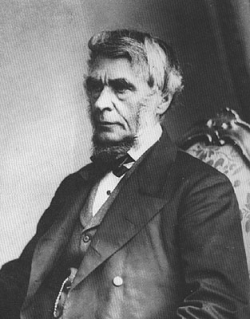George Bentham

- Born
- 22 September 1800
- Died
- 10 September 1884 (age 83)
George Bentham was a botanist whose classification of the plants that produce seeds formed the basis of the way that vascular plants are classified today.
Bentham began to study botany while he was looking after his father’s estate near Montpellier in France. He was impressed by the work of the French botanist, Pyrame de Candolle, who had produced tables of French flora.
When Bentham’s father and uncle died in 1833, the money he inherited allowed him to concentrate full time on studying botany. He collected a herbarium of more than 100,000 specimens and when this became difficult for him to house, he donated it to the Royal Botanic Gardens at Kew in 1854, on condition that it could be visited by other botanists. The Director of the gardens, Sir William Hooker, invited him to establish permanent quarters there.
Bentham worked on a survey of flora in the British colonies, and helped to catalogue more than 7,000 species. He realised that the existing criteria for allocating species to their genera was inadequate, and started to classify all plants that produce seed. These are known as Spermatophyta.
Bentham worked on this classification with Sir Joseph Hooker and spent 27 years researching specimens for Genera Plantarum which was published in 1862-83. This covered more than 97,000 species.
Bentham’s system established a taxonomy of genera and species that has been largely adopted by modern systems of classification. His Handbook of British Flora, co-authored with Sir Joseph Hooker and published in 1858, is still a standard work.



